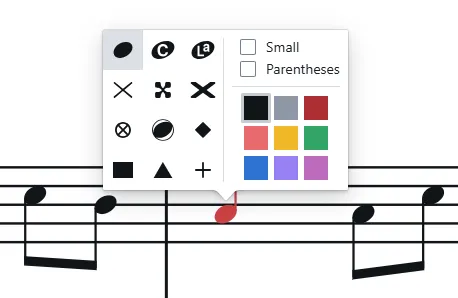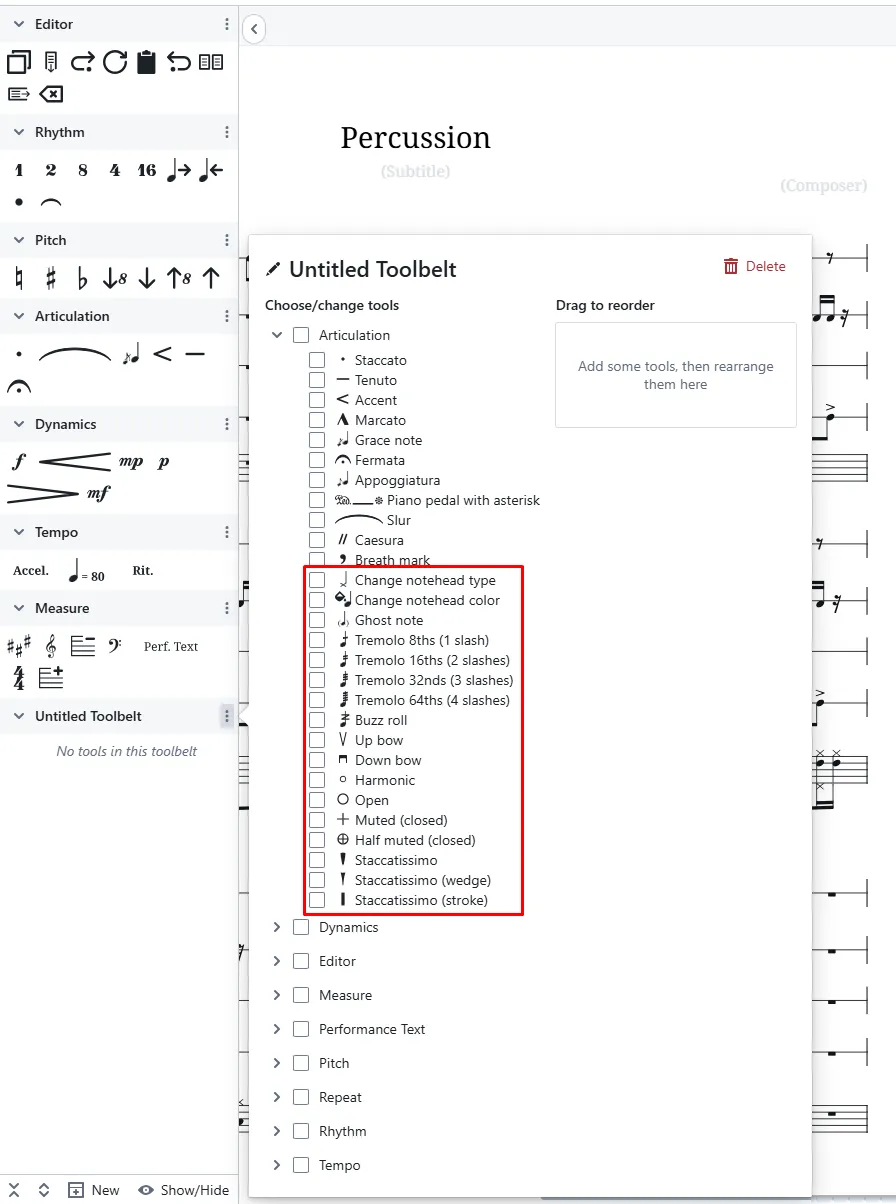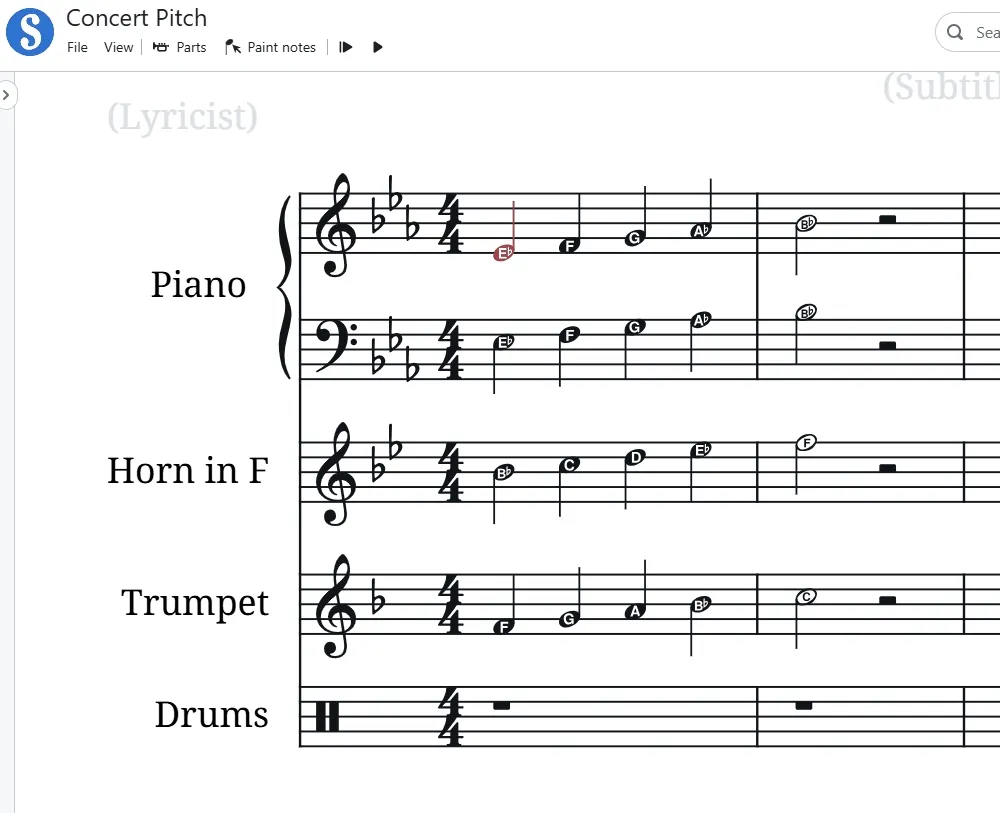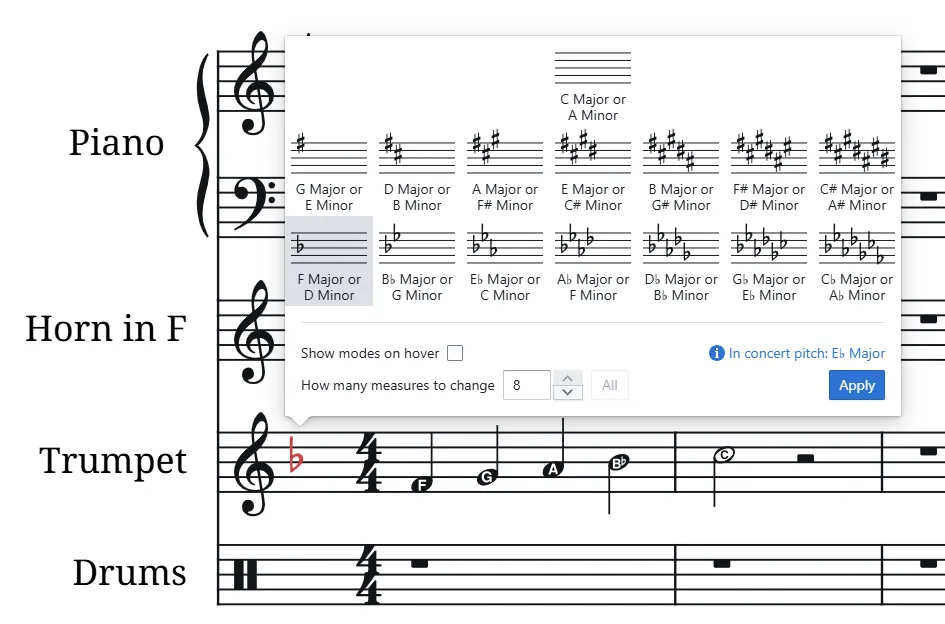The latest release of Scorewright is available now! We’re still in closed beta, so if you haven’t already, please register for access to try out these new features. This release includes:
Unlike most other instruments, the drums are really dozens of instruments and sounds at the command of one musician. Drum notation uses articulations, stem decorations, and differently shaped noteheads to tell the musician which of these instruments to hit and how to hit them.
To fully support this we needed more articulation options as well as notehead styling, so we added support for both. For drums, noteheads will automatically be styled to the most common drum for the staff line. For those extra sounds you can add articulation or edit the notehead.
Scorewright supports all the following note variants in playback:

We’ve also added playback support for ghost notes and accents for all instruments. This is especially exciting to me as a drummer, as Scorewright now supports playback for my favourite kind of music: super-precise ghost-notey drumming.

The notation looks great and sounds great in playback, and I can’t wait to see what people make with it.
As mentioned above, to fully support drum notation we needed to also support more articulations, stem decorations, and notehead styling.
You can now double-click a note to change its styling. To change a bunch of notes at once, select the ones you want to change and press Ctrl+K or use the search bar to open notehead styling.

From this dialog you can change the notehead to
The note-name and solfege noteheads will change with the note’s pitch. Solfege will change with the key signature as well so “Do” always lands on the first degree of the major scale.
We support 10 new articulations, namely
For drums, open, muted (closed), and half-muted (half-closed) can be used to change the tone of the hi-hat.
Additionally, accents are supported in playback for all instruments.
In the spirit of drum notation, we’ve also added tremolos with 1, 2, 3, or 4 slashes, and buzz rolls.

These features can be found in the search bar or added to your toolbelts by looking in the “Articulations” section.

Concert pitch was a much requested feature after our closed beta release, and we’re happy to announce we’ve included support for concert pitch transposition in this release.
By default scores will be presented transposed. Concert pitch can be toggled in the View menu.

If the score is in transposed pitch and you change the key signature for a transposed instrument, the concert pitch transposition of the key will be shown for convenience.

For now the instruments in our library will have their most common transposition (e.g. B♭ for trumpet, F for French horn, E♭ for alto sax, etc.). In the future we plan to enable more options than just standard transposition.
We will continue to improve our notation fundamentals, with whole-measure rests and tuplets coming next.
We’re still in closed beta, if you haven’t already please register for access and tell us what you want to see next. We love to hear your feedback!
♫